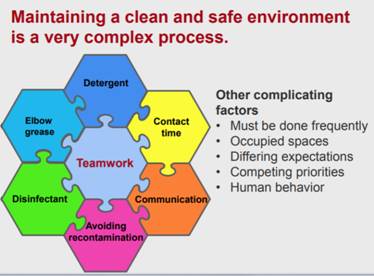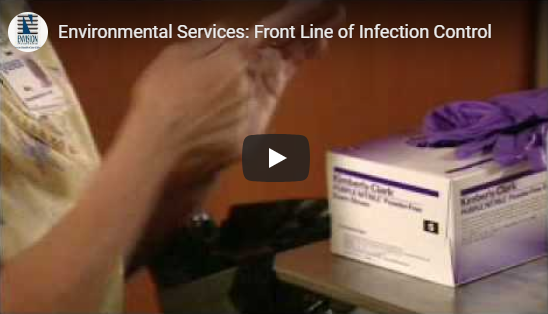Did you know that, at any given time, one in 25 patients in the U.S. is battling an infection acquired in the hospital? Or that an estimated 720,000 hospital-acquired infections occur every year in the U.S.?
In addition to the human costs, hospital-acquired infections impose a heavy financial burden on healthcare institutions. The five most common hospital-acquired infections alone cost an estimated $10 billion a year, and three separate programs run by the federal government’s Centers for Medicare and Medicaid Services penalize hospitals for hospital-acquired infections.
Environmental Service (EVS) workers play a critical role in the fight to end this growing crisis, but they need the proper support, training, time and equipment, as discussed at a recent infection prevention conference co-hosted by the Labor Management Project.
We know that proper hand hygiene—as demonstrated in the video below—is the single most important way to prevent transmission of pathogens in health care settings. But good hand hygiene practices alone are not enough, since clean hands can become recontaminated.
A clean, thoroughly de-contaminated environment is critical to a facility’s ability to prevent infections, particularly as dangerous new strains of antibiotic-resistant bacteria and fungi surface and multiply. Some microorganisms can live for months on surfaces in hospital rooms. Contaminated surfaces can transmit pathogens to healthcare workers, patients, and visitors when they touch them, whether with bare hands or with gloves. And that’s where EVS workers come in.
Here are some best practices for hospital cleaning that can save lives:
- Properly train and monitor EVS staff. Educate EVS workers on hand hygiene and best cleaning practices, including which disinfectant to use, when, and how. Assessment tools may include checklists, direct observation, and surveys of staff and patients.
- Establish a Clean Team that can look for ways to improve cleanliness throughout a facility and be responsible for sharing information and implementing best practices.
- Clean and disinfect “high-touch” surfaces (those receiving frequent hand contact), according to healthcare facility protocols, including:
- Doorknobs
- Over-bed tables
- Bed rails
- Telephones
- Side tables
- Remote controls
- Toilet and sink handles
- Light switches
- Routinely clean curtains and shades
- Carry out process improvement initiatives to address human factors and logistical concerns such as workflow, staffing, cross-disciplinary collaboration, and patient preferences.
- Wear gloves properly. Gloves must always be changed between patients, should never be worn in hallways, and should be changed when moving from a residential area to a shared restroom space. Wash hands after removing gloves.
- Properly label and store all chemicals to eliminate any potential risk of contamination and injuries.
- Conduct frequent environmental leader rounding to gain insight on what can be improved.
- Allow sufficient time to clean effectively. Pressures on EVS workers to turn over beds quickly can lead to insufficient cleaning and decontamination.
- Consult the CDC’s comprehensive guidelines.
As antibiotic-resistant pathogens reach alarming levels, we cannot afford to ignore the role EVS workers play on the front lines of prevention. We must arm EVS workers with the tools, expertise, and time they need to do their jobs effectively, so they can save lives, improve patient health, and help keep hospitals solvent.
Download a pdf of this article.

